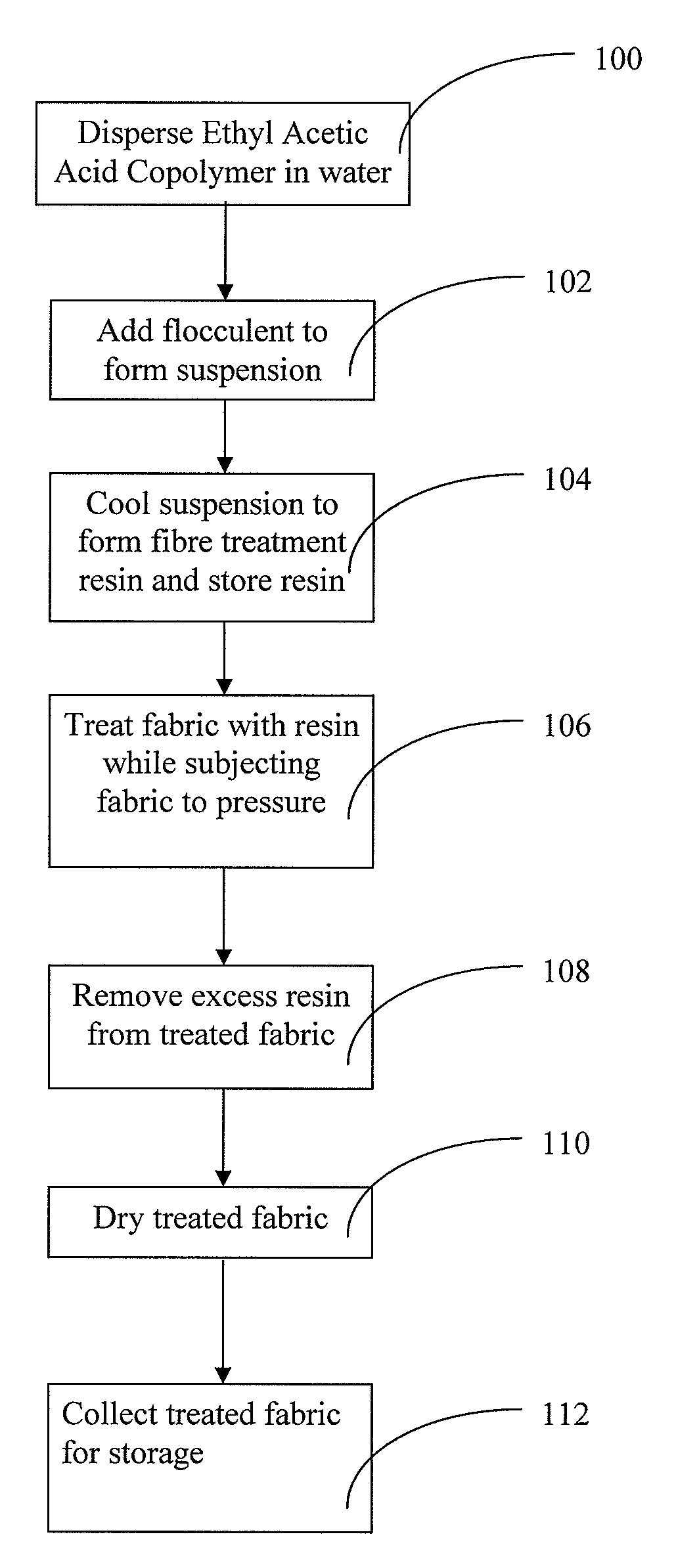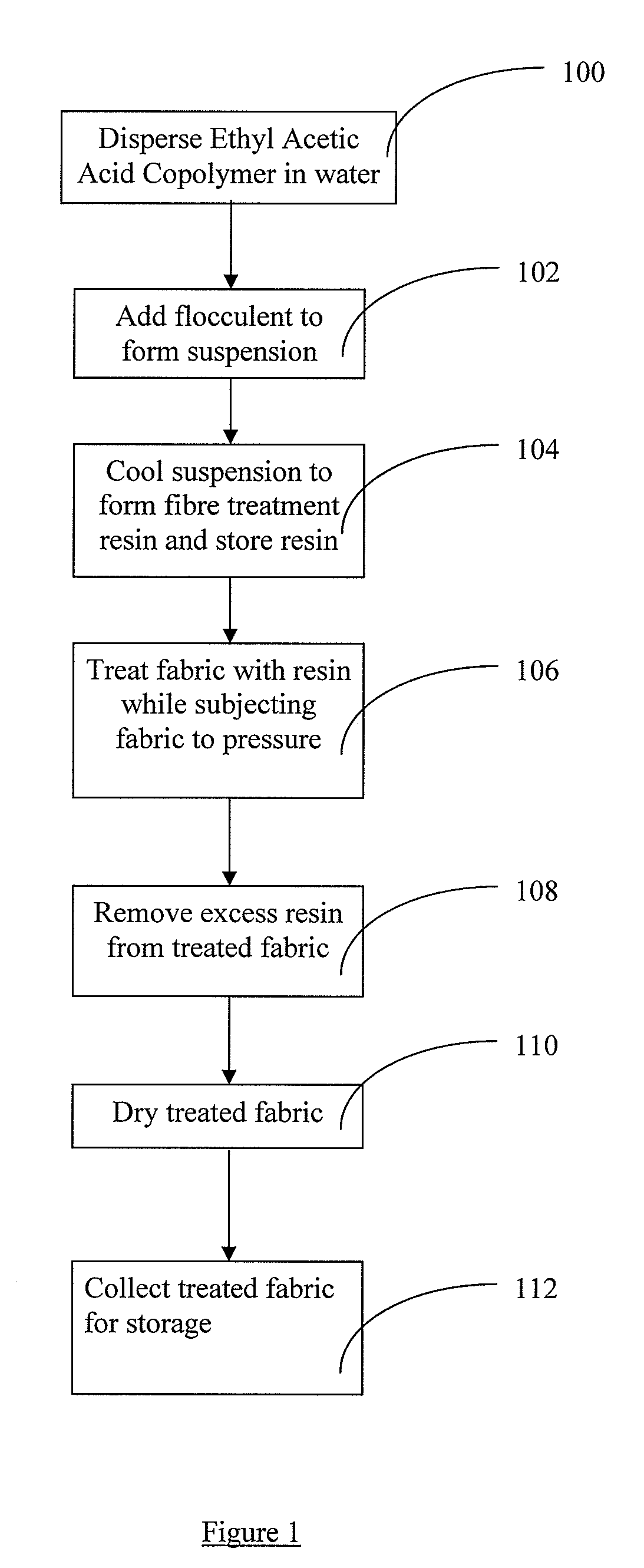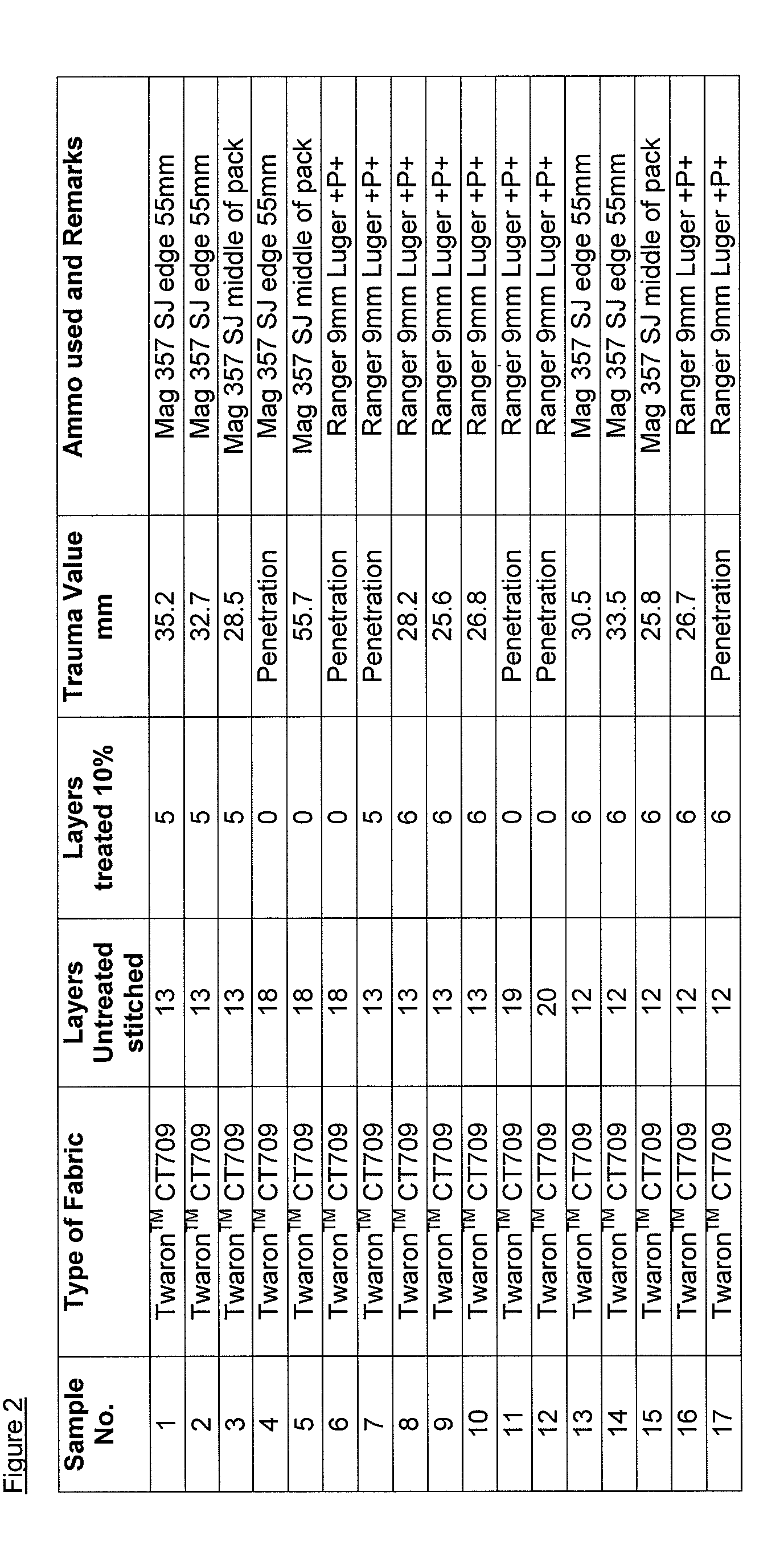Fibre treatment resin and method of preparing such resin
- Summary
- Abstract
- Description
- Claims
- Application Information
AI Technical Summary
Benefits of technology
Problems solved by technology
Method used
Image
Examples
Embodiment Construction
[0029]Referring to FIG. 1, at step 100, a mixture of ethyl acetic acid copolymer and pressurised heated water is placed in a container and the container is placed in a pressurised chamber. The temperature of the heated water is 100° C. and under 5 bars of pressure at least. The water ratio to copolymer ratio is from 5% to 45% of total mass of the mixture.
[0030]The ethyl acetic acid copolymer is then ultrasonically dispersed in the mixture at elevated temperatures.
[0031]At step 102, ammonia is introduced as a flocculent into the mixture to prevent settling of the nano-particulate of the ethyl acetic acid. The amount of ammonia introduced is about 0.5% of the total volume of the mixture to form a homogenous suspension fluid.
[0032]At step 104, the suspension fluid is allowed to cool naturally to room temperature to form a fibre treatment resin and then transferred to a polyethylene container and stored at a temperature of about 20° C. When suitably stored, the fibre treatment resin may...
PUM
| Property | Measurement | Unit |
|---|---|---|
| Temperature | aaaaa | aaaaa |
| Temperature | aaaaa | aaaaa |
| Temperature | aaaaa | aaaaa |
Abstract
Description
Claims
Application Information
 Login to View More
Login to View More - R&D
- Intellectual Property
- Life Sciences
- Materials
- Tech Scout
- Unparalleled Data Quality
- Higher Quality Content
- 60% Fewer Hallucinations
Browse by: Latest US Patents, China's latest patents, Technical Efficacy Thesaurus, Application Domain, Technology Topic, Popular Technical Reports.
© 2025 PatSnap. All rights reserved.Legal|Privacy policy|Modern Slavery Act Transparency Statement|Sitemap|About US| Contact US: help@patsnap.com



